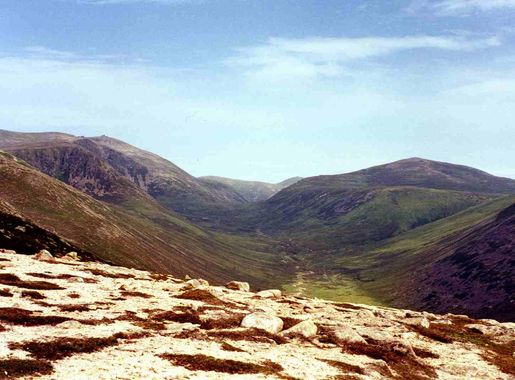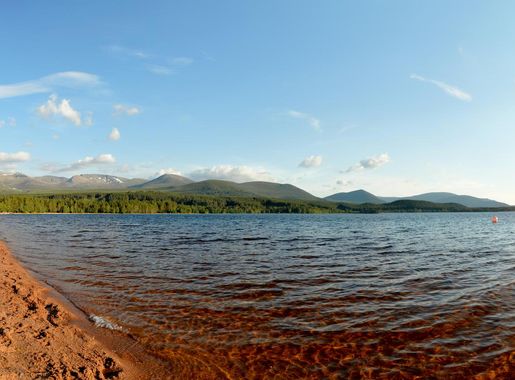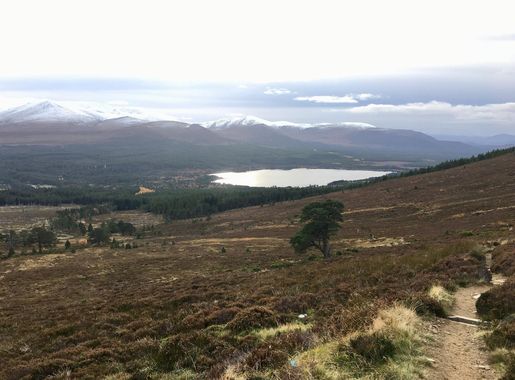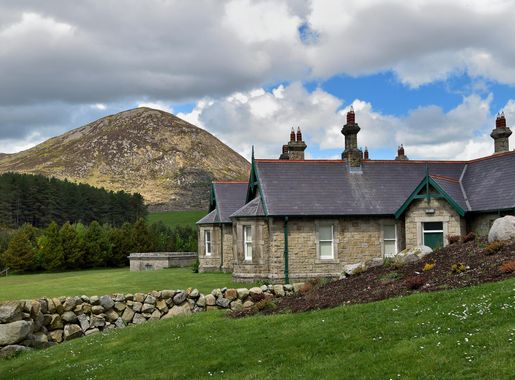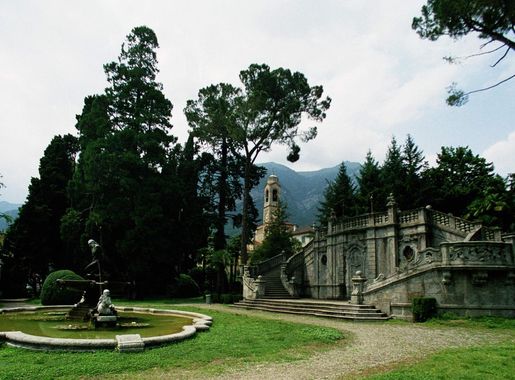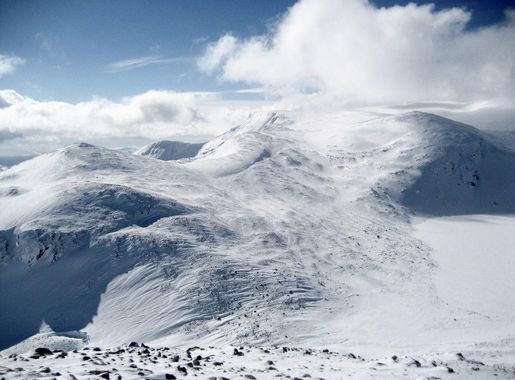
Cairngorms National Park: Scotland's Natural Gem
Discover the majestic landscapes and rich wildlife of Cairngorms National Park, the UK's largest national park, nestled in the heart of the Scottish Highlands.
Nestled in the heart of the Scottish Highlands, Cairngorms National Park is a breathtaking haven for nature lovers and adventure seekers alike. Spanning over 4,500 square kilometers, it is the largest national park in the United Kingdom. The park is home to a diverse array of wildlife, including red squirrels, golden eagles, and the elusive Scottish wildcat. The landscape is a stunning mix of ancient forests, heather-clad moorlands, and towering mountains. The park boasts five of the UK's six highest peaks, offering unparalleled opportunities for hiking, climbing, and skiing. The picturesque lochs and rivers provide excellent spots for fishing, kayaking, and wild swimming. Cairngorms National Park is also rich in cultural heritage. Discover charming villages like Aviemore and Braemar, where you can enjoy traditional Scottish hospitality, sample local cuisine, and learn about the region's history. Whether you're exploring the scenic trails or immersing yourself in local culture, Cairngorms National Park promises an unforgettable experience.
Local tips in Cairngorms National Park
- Visit during autumn for stunning foliage and fewer crowds.
- Wear layers; weather can change quickly in the Highlands.
- Book accommodations early, especially in peak seasons.
- Check local guides for the best wildlife spotting areas.
- Consider guided tours for in-depth knowledge and safety.
Cairngorms National Park: Scotland's Natural Gem
Nestled in the heart of the Scottish Highlands, Cairngorms National Park is a breathtaking haven for nature lovers and adventure seekers alike. Spanning over 4,500 square kilometers, it is the largest national park in the United Kingdom. The park is home to a diverse array of wildlife, including red squirrels, golden eagles, and the elusive Scottish wildcat. The landscape is a stunning mix of ancient forests, heather-clad moorlands, and towering mountains. The park boasts five of the UK's six highest peaks, offering unparalleled opportunities for hiking, climbing, and skiing. The picturesque lochs and rivers provide excellent spots for fishing, kayaking, and wild swimming. Cairngorms National Park is also rich in cultural heritage. Discover charming villages like Aviemore and Braemar, where you can enjoy traditional Scottish hospitality, sample local cuisine, and learn about the region's history. Whether you're exploring the scenic trails or immersing yourself in local culture, Cairngorms National Park promises an unforgettable experience.
When is the best time to go to Cairngorms National Park?
Unmissable attractions to see
Highland Wildlife Park
Explore the enchanting Highland Wildlife Park, where conservation meets adventure in the heart of the Scottish Highlands.
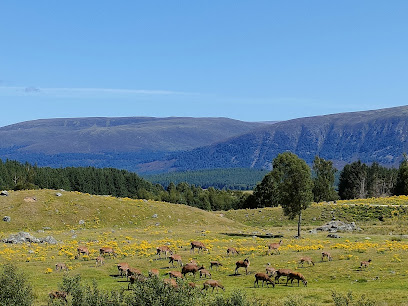
Rothiemurchus
Experience the natural beauty and cultural richness of Rothiemurchus, a must-visit destination in the Scottish Highlands for outdoor enthusiasts and travelers.
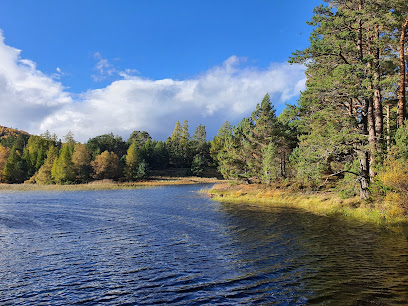
Braemar Highland Games Centre
Discover the rich heritage of Scotland at the Braemar Highland Games Centre, where tradition meets culture in the stunning landscapes of the Highlands.
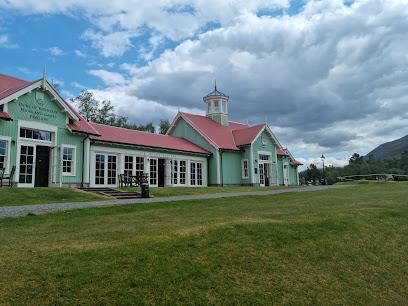
Craigellachie National Nature Reserve (Entrance)
Discover Craigellachie National Nature Reserve, a stunning natural oasis in Aviemore, where breathtaking landscapes and diverse wildlife await your exploration.

Corgarff Castle
Explore Corgarff Castle, a stunning historical site in the Scottish Highlands, rich in heritage and breathtaking views.
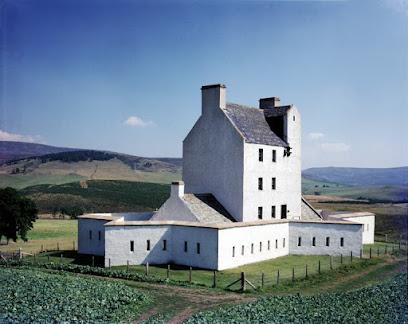
Little Landys, Rothiemurchus
Experience the magic of Little Landys in Rothiemurchus - a family-friendly attraction filled with adventure, creativity, and breathtaking Highland scenery.
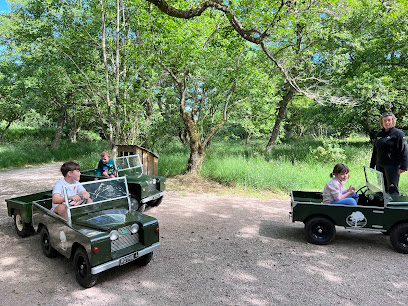
Crathie, Suspension Bridge
Discover the stunning Crathie Suspension Bridge, a picturesque landmark over the River Dee, perfect for nature lovers and photography enthusiasts.
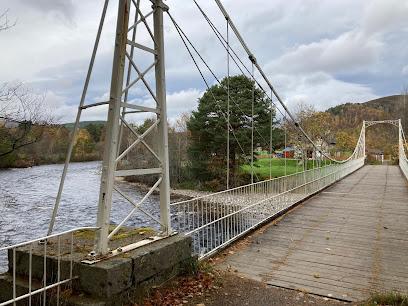
Tay Forest Park
Explore the serene beauty of Tay Forest Park, a natural paradise in the heart of Scotland, perfect for outdoor activities and wildlife encounters.
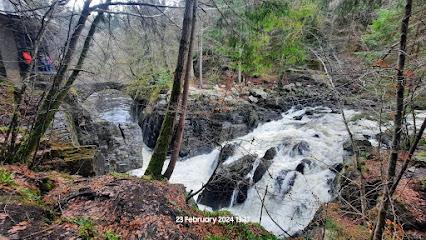
Essential places to dine
The Winking Owl, Craft Ale Pub & Bar
Discover the charm of The Winking Owl in Aviemore – your go-to spot for craft ales and delightful cuisine amidst stunning Scottish landscapes.
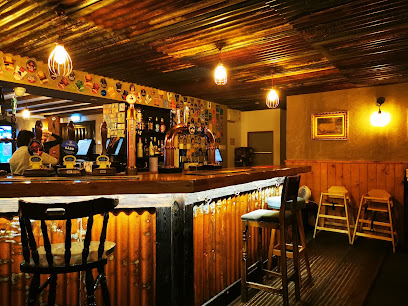
The Old Bridge Inn
Experience the heart of Scottish hospitality at The Old Bridge Inn in Aviemore - where great food meets live music in a cozy setting.

Coylumbridge Hotel
Discover tranquility and adventure at Coylumbridge Hotel in Aviemore - your perfect retreat amidst nature's beauty.
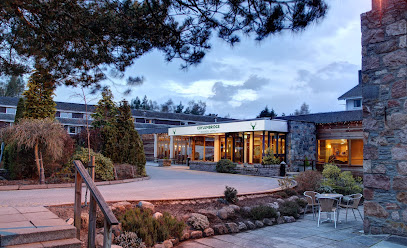
Happy Haggis
Experience the best fish and chips in Aviemore at Happy Haggis – a true taste of Scottish culinary tradition!
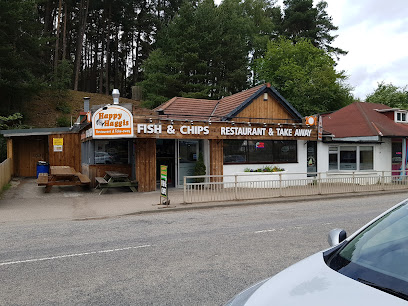
Macduis Speyside Inn Catering Ltd
Discover the culinary treasures of Scotland at Macduis Speyside Inn in Aviemore - where tradition meets modern fine dining.
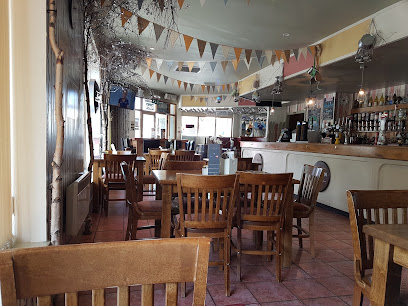
Ptarmigan Restaurant
Experience exquisite dining at Ptarmigan Restaurant in Cairngorms National Park – where breathtaking views meet delightful local flavors.
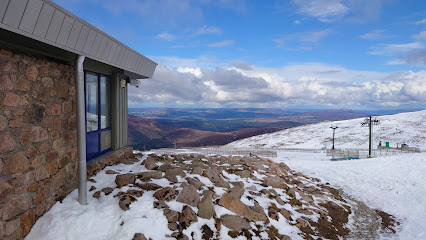
Cairngorm Cafe
Experience Highland hospitality at Cairngorm Cafe with delicious local cuisine amid stunning mountain views in Aviemore.
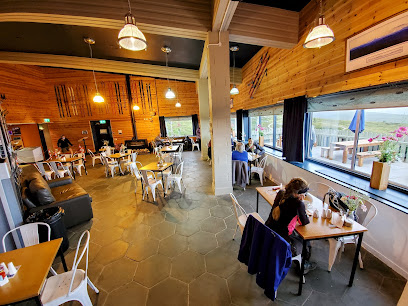
Markets, malls and hidden boutiques
Cairngorms National Park
Discover the awe-inspiring landscapes and rich wildlife of Cairngorms National Park, Scotland's largest national park, perfect for outdoor adventures.
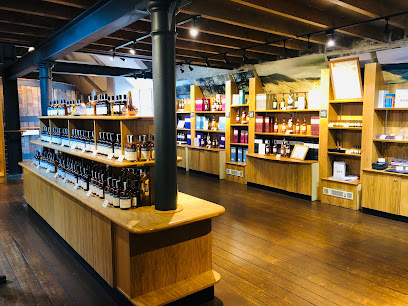
The House of Bruar
Discover the essence of Scottish craftsmanship at The House of Bruar, a premier Highland department store offering unique clothing and local delicacies.
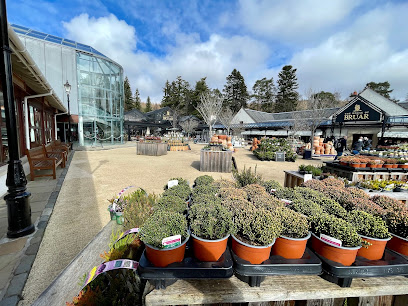
Rothiemurchus
Experience the natural beauty and local charm of Rothiemurchus - a Scottish Highlands treasure for outdoor lovers and culture seekers alike.
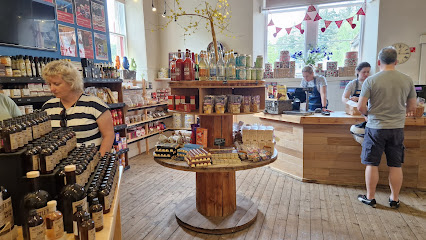
Cairngorm Mountain
Experience the breathtaking beauty and thrilling outdoor activities at Cairngorm Mountain, a top destination in the Scottish Highlands.
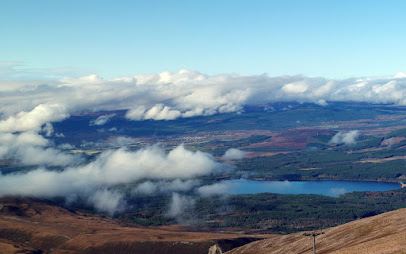
Speyside Centre
Experience the beauty of nature and local flavors at the Speyside Centre, a premier garden centre and restaurant in Grantown-on-Spey.

Zip Trek Adventure Park Aviemore
Experience the thrill of zip-lining in the heart of the Scottish Highlands at Zip Trek Adventure Park, a perfect blend of adventure and relaxation.
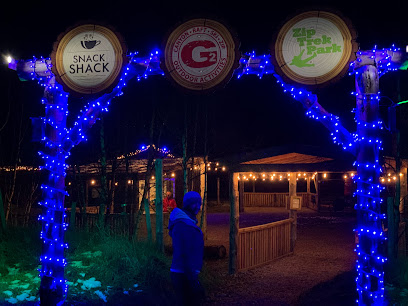
The Whisky Castle & Highland Market
Explore the essence of Scotland at The Whisky Castle & Highland Market, where exceptional whisky and local treasures await every visitor.
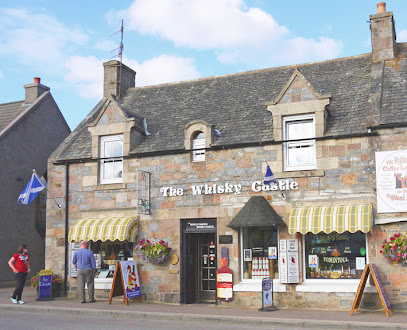
Cairngorm Mountain Sports
Discover unparalleled outdoor adventures at Cairngorm Mountain Sports, your essential stop for gear and guidance in Aviemore, Scotland.
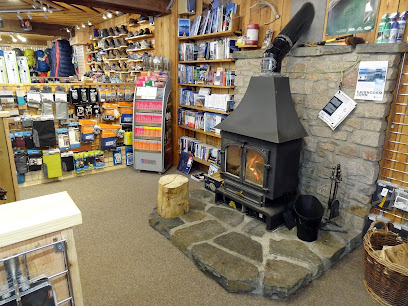
Blacks
Visit Blacks in Aviemore for top-quality outdoor clothing and gear, ensuring you're prepared for your adventures in the stunning Cairngorms.

Balliefurth Farm Shop
Experience the authentic flavors of Scotland at Balliefurth Farm Shop in Nethy Bridge, where fresh produce meets Highland hospitality.
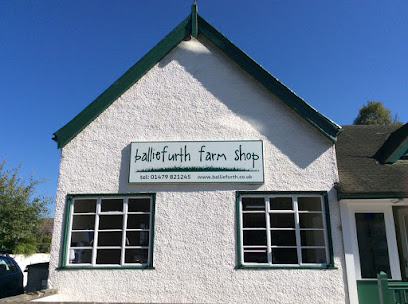
Tiso Aviemore Outdoor Experience
Discover the best outdoor clothing and equipment at Tiso Aviemore, your go-to shop for adventure gear in the breathtaking Scottish Highlands.
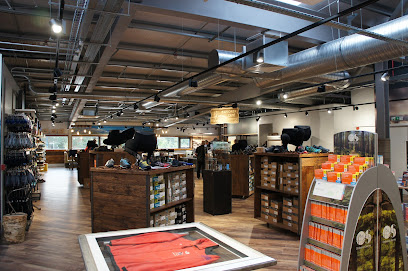
Spey Valley Shopping
Experience unique shopping with local flair at Spey Valley Shopping in Aviemore, where quality meets charm amidst the stunning Scottish Highlands.
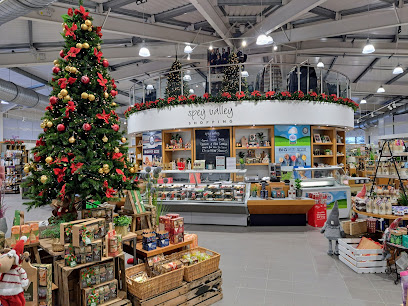
Young's Auld Sweetie Shop
Explore the sweet wonders of Young's Auld Sweetie Shop in Aviemore, where traditional candies and homemade treats await to delight your senses.
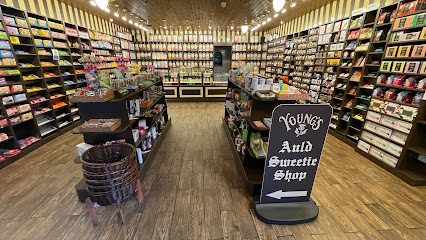
Ellis Brigham - Aviemore
Discover top-notch outdoor gear at Ellis Brigham, Aviemore's leading adventure sports shop, catering to all your skiing, camping, and running needs.

Mountain Warehouse
Discover top-quality outdoor gear and clothing at Mountain Warehouse, your essential stop in Aviemore for all adventure seekers.
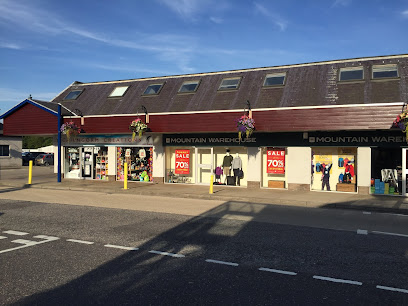
Essential bars & hidden hideouts
Cairngorm Hotel
Experience the warmth of Scottish hospitality at the Cairngorm Hotel, your perfect base for exploring the stunning landscapes of Aviemore.
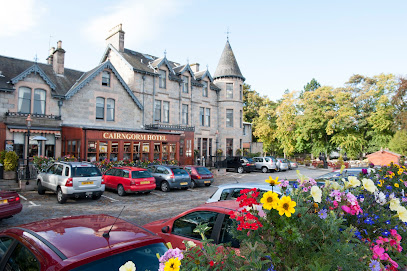
The Winking Owl, Craft Ale Pub & Bar
Experience the charm of The Winking Owl in Aviemore – a delightful craft ale pub with local brews and delicious pub fare amidst stunning Highlands scenery.
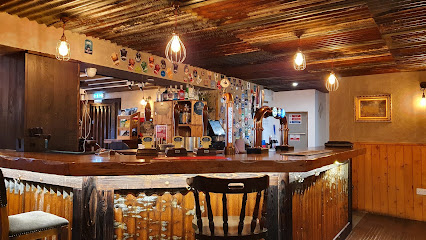
The Old Bridge Inn
Discover the heart of Scottish hospitality at The Old Bridge Inn, where hearty meals, local brews, and live music await visitors in picturesque Aviemore.
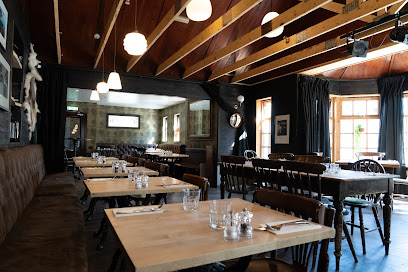
Macduis Speyside Inn Catering Ltd
Discover the flavors of Scotland at Macduis Speyside Inn, a top restaurant in Aviemore offering exquisite dining experiences and local delicacies.
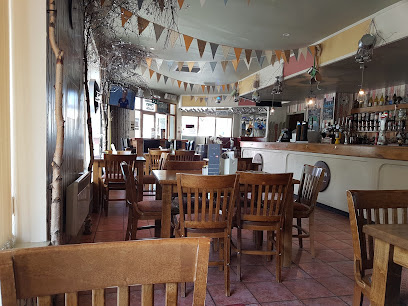
The Boat Country Inn & Restaurant
Experience the charm of The Boat Country Inn & Restaurant, where cozy accommodations meet delightful dining in the heart of the Scottish Highlands.

Skiing Doo
Experience the perfect blend of bar and restaurant at Skiing Doo, where great food and local drinks meet Highland hospitality in Aviemore.
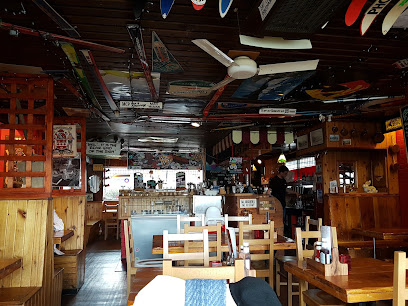
the Balavoulin
Experience the charm of The Balavoulin in Aviemore, where traditional Scottish hospitality meets modern comfort in a stunning Highland setting.
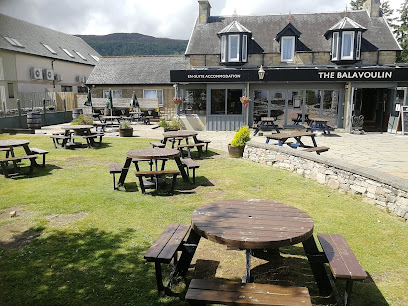
The Craig Bar
Discover the charm of The Craig Bar in Grantown-on-Spey, where local brews and hearty dishes await in a cozy atmosphere.
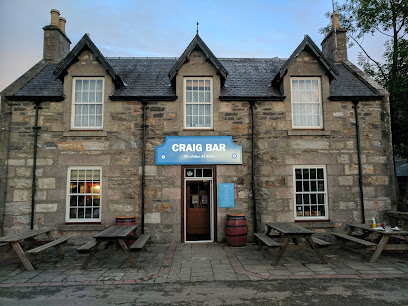
The Pine Marten Bar
Experience the heart of Glenmore at The Pine Marten Bar, where local flavors and cozy atmosphere meet adventure in the Scottish Highlands.
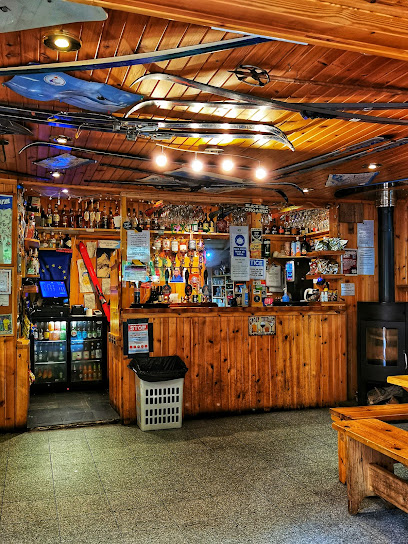
Mambos
Discover the vibrant nightlife of Aviemore at Mambo's, where great drinks, live music, and friendly vibes create unforgettable memories.
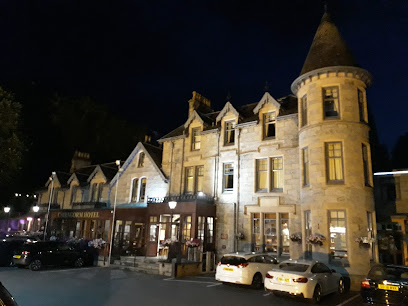
Farquharsons Bar and Kitchen
Experience the best of Scottish cuisine at Farquharsons Bar and Kitchen, a top-rated gastropub in the scenic village of Braemar.
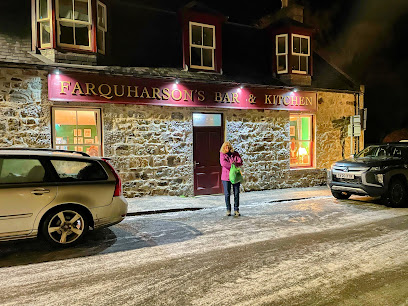
Claymore Bar
Experience the warmth and hospitality of Claymore Bar in Grantown-on-Spey, where local ales and hearty meals await in a cozy atmosphere.
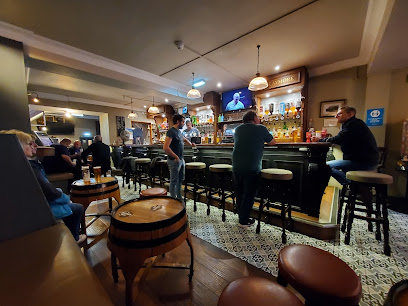
The Flying Stag
Discover the warmth of Scottish hospitality at The Flying Stag, a charming pub in Braemar offering local flavors and a cozy atmosphere.
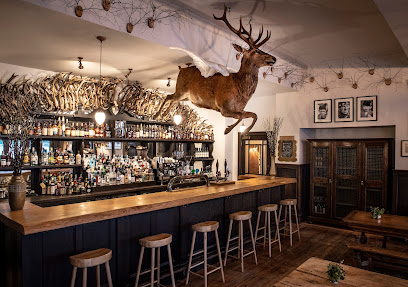
SUIE BAR
Experience the heart of Scottish hospitality at Suie Bar, a cozy retreat in Kincraig with local brews and warm ambiance.
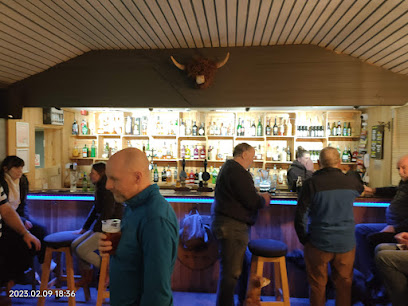
Woodshed Bar
Experience the warmth of Scottish hospitality at Woodshed Bar in Aviemore, where local drinks and cozy ambiance await.
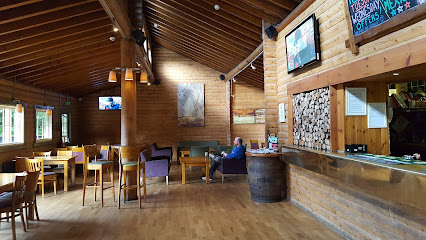
Local Phrases about Cairngorms National Park
-
- HelloAye
[aye] - GoodbyeCheerio
[cheer-ee-oh] - YesAye
[aye] - NoNae
[nay] - Please/You're welcomePlease/You're welcome
[please/yer welcome] - Thank youThank ye
[thank yee] - Excuse me/SorryExcuse me/Sorry
[excuse me/sorry] - How are you?Hoo are ye?
[hoo are yee] - Fine. And you?Fine. An hoo are ye?
[fine. an hoo are yee] - Do you speak English?Div ye speak English?
[div yee speak english] - I don't understandI dinnae ken
[I din-ay ken]
- HelloAye
-
- I'd like to see the menu, pleaseI'd like tae see the menu, please
[I'd like tae see the menu, please] - I don't eat meatI dinnae eat meat
[I din-ay eat meat] - Cheers!Slàinte!
[slan-cha] - I would like to pay, pleaseI wid like tae pay, please
[I wid like tae pay, please]
- I'd like to see the menu, pleaseI'd like tae see the menu, please
-
- Help!Help!
[Help!] - Go away!Gae awa!
[Gae awa!] - Call the Police!Caw the Polis!
[Caw the Polis!] - Call a doctor!Caw a docter!
[Caw a docter!] - I'm lostI'm tint
[I'm tint] - I'm illI'm no weel
[I'm no weel]
- Help!Help!
-
- I'd like to buy...I'd like tae buy...
[I'd like tae buy...] - I'm just lookingI'm jist haein a keek
[I'm jist haein a keek] - How much is it?Hoo much is it?
[hoo much is it] - That's too expensiveThon's ower dear
[Thon's ower dear] - Can you lower the price?Can ye lower the price?
[Can yee lower the price]
- I'd like to buy...I'd like tae buy...
-
- What time is it?Fit toime is it?
[fit toime is it] - It's one o'clockIt's yin o'clock
[It's yin o'clock] - Half past (10)Hoff past (10)
[Hoff past (10)] - MorningMornin
[mornin] - AfternoonEfterneen
[ef-ter-neen] - EveningEenin
[eenin] - YesterdayYestreen
[yes-treen] - TodayThe day
[The day] - TomorrowThe morn
[The morn] - 1Yin
[Yin] - 2Twa
[Twa] - 3Three
[Three] - 4Fower
[Fower] - 5Five
[Five] - 6Sax
[Sax] - 7Seven
[Seven] - 8Aucht
[Aucht] - 9Nine
[Nine] - 10Ten
[Ten]
- What time is it?Fit toime is it?
-
- Where's a/the...?Whaur's a/the...?
[Whaur's a/the] - What's the address?Fit's the address?
[Fit's the address] - Can you show me (on the map)?Can ye show me (on the map)?
[Can yee show me (on the map)] - When's the next (bus)?Whan's the next (bus)?
[Whan's the next (bus)] - A ticket (to ....)A ticket (tae ....)
[A ticket (tae ....)]
- Where's a/the...?Whaur's a/the...?
History of Cairngorms National Park
-
The Cairngorms region has been inhabited since prehistoric times, with evidence of early human activity dating back to the Mesolithic period. Archaeological findings such as stone tools and ancient cairns suggest that nomadic hunter-gatherers roamed this rugged terrain. The area also contains remnants of Neolithic and Bronze Age structures, including burial mounds and standing stones, indicating a long history of human settlement.
-
The Cairngorms were once a significant territory for the Picts, an ancient Celtic people who dominated northern Scotland before the Viking invasions. The Picts left behind numerous artifacts, including intricately carved stones that depict their mystic symbols and animals. The Pictish heritage is an essential part of the cultural fabric of the Cairngorms and offers a glimpse into the enigmatic civilization that once thrived here.
-
During the medieval period, the Cairngorms became a stronghold for various Scottish clans, including the powerful Clan Grant and Clan Macpherson. Numerous castles and fortified houses were built across the region, serving as both defensive structures and symbols of clan power. Notable castles like Braemar Castle and Corgarff Castle stand as enduring monuments to this turbulent era of clan rivalries and feudal warfare.
-
The Cairngorms played a pivotal role during the Jacobite Risings of the 17th and 18th centuries, as Highland clans rallied to support the Stuart claim to the British throne. The region's rugged terrain provided a strategic advantage for Jacobite forces, and several skirmishes and battles took place within its bounds. The historical impact of the Jacobite movement is still commemorated in the Cairngorms through various monuments and historical sites.
-
Queen Victoria's deep affection for the Scottish Highlands brought significant attention to the Cairngorms in the 19th century. Her frequent visits to Balmoral Castle, located on the edge of the park, popularized the region as a royal retreat. The Victorian era saw an influx of tourists and the development of infrastructure such as railways and grand lodges, forever changing the landscape and economy of the Cairngorms.
-
In 2003, the Cairngorms National Park was established to protect the unique natural and cultural heritage of the area. Spanning over 4,500 square kilometers, it is the largest national park in the United Kingdom. The park's formation marked a significant milestone in conservation efforts, ensuring the preservation of its diverse ecosystems, historic sites, and traditional ways of life for future generations to appreciate and enjoy.
Cairngorms National Park Essentials
-
Cairngorms National Park is located in the Scottish Highlands. The nearest international airports are Aberdeen Airport, Inverness Airport, and Edinburgh Airport. From these airports, you can rent a car or take a train or bus to reach the park. The main towns within the park, such as Aviemore and Grantown-on-Spey, are well connected by public transport. Trains from major cities like Edinburgh, Glasgow, and Inverness regularly stop at Aviemore, making it a convenient entry point to the park.
-
Once within Cairngorms National Park, you have several options for getting around. Renting a car provides the most flexibility, allowing you to explore remote areas at your own pace. Public buses operate between the major towns and villages, although services can be infrequent, especially on weekends. Cycling is also a popular mode of transport, with many scenic routes available. Additionally, taxis are available but can be costly for long distances. For a unique experience, consider taking the Strathspey Railway, a heritage steam train that runs between Aviemore and Broomhill.
-
The official currency in the United Kingdom is the Pound Sterling (GBP). Credit and debit cards are widely accepted in shops, restaurants, and hotels within the park. However, it's advisable to carry some cash, as smaller establishments and rural areas may not accept card payments. ATMs are available in larger towns like Aviemore and Braemar, but can be sparse in more remote locations. Contactless payment methods are also commonly used.
-
Cairngorms National Park is generally a safe destination for tourists. However, it's essential to take standard precautions. The park's vast and rugged terrain can pose risks, so always inform someone of your plans before heading out on a hike. Be prepared for sudden changes in weather, and carry appropriate gear. There are no specific high-crime areas targeting tourists, but it's always best to stay vigilant and aware of your surroundings, particularly in more isolated spots.
-
In case of an emergency, dial 999 or 112 for immediate assistance. The Cairngorms Mountain Rescue Team is available for emergencies in remote areas. It's advisable to have travel insurance that covers medical emergencies and outdoor activities. For minor health issues, pharmacies are available in the larger towns. Always carry a map, compass, and a fully charged mobile phone when venturing into the park's more remote areas.
-
Fashion: Do dress in layers and be prepared for varying weather conditions. Waterproof clothing and sturdy hiking boots are essential. Avoid wearing overly bright colors that may disturb wildlife. Religion: The park is home to several historic churches and sites; do respect these places by dressing modestly and behaving respectfully. Public Transport: Do be courteous to drivers and fellow passengers. Don't play loud music or eat large meals on public transport. Greetings: Do greet people with a friendly 'hello' or 'hi'. A handshake is also acceptable. Eating & Drinking: Do try local specialties like haggis and Scottish shortbread. Don't litter; always dispose of waste properly to preserve the park's natural beauty.
-
To experience Cairngorms National Park like a local, visit the local farmers' markets where you can buy fresh produce and artisanal goods. Engage with locals, who are often friendly and willing to share stories about the area's history and culture. Don't miss the opportunity to participate in local events and festivals, which provide a genuine taste of Highland life. For a unique experience, take a guided wildlife tour to spot native species like red deer, golden eagles, and capercaillies. Finally, consider visiting lesser-known trails and sites to avoid the crowds and enjoy the park's serene beauty.
Nearby Cities to Cairngorms National Park
-
Things To Do in Dundee
-
Things To Do in Aberdeen
-
Things To Do in Stirling
-
Things To Do in Edinburgh
-
Things To Do in Glasgow
-
Things To Do in Newcastle upon Tyne
-
Things To Do in Durham
-
Things To Do in Ramsey
-
Things To Do in Belfast
-
Things To Do in Kirk Michael
-
Things To Do in Laxey
-
Things To Do in Peel
-
Things To Do in Onchan
-
Things To Do in Derry
-
Things To Do in Douglas

